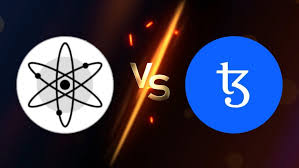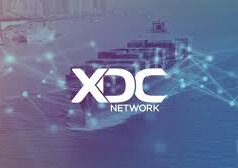The blockchain world is a crowded space, with projects vying to solve scalability, interoperability, and governance in their own unique ways. Two heavyweights, Tezos (XTZ) and Cosmos (ATOM), have been making waves for years, each with a distinct approach to building decentralized ecosystems. As of August 2025, both platforms are pushing the boundaries of what blockhains can do, but they cater to different needs and philosophies. As a crypto enthusiast, I’m excited to dive into how Tezos and Cosmos stack up, from their tech to their market performance, and what sets them apart. Let’s break it down.
1. Governance & Upgradability: Forkless Consensus vs Validator Voting
Tezos excels with its self-amending, on-chain governance model. Token holders vote directly on finished upgrade proposals—no forks, no fragmentation. This smooth, continuous evolution minimizes network disruption.(BestDapps, Wikipedia)
Meanwhile, Cosmos uses a more traditional validator-driven governance, where stakeholders and validators vote on proposals, and changes are implemented off-chain. This allows flexibility—but can consolidate power among large validators.(BestDapps, tutorials.cosmos.network)
A Redditor put it succinctly when contrasting Tezos vs Cosmos governance:
“One glaring difference with cosmos is that you’re not voting on finished code, and instead on intentions.”(Reddit)
2. Consensus Mechanism & Performance: LPoS vs Tendermint BFT
Tezos runs on Liquid Proof-of-Stake (LPoS)—a form of PoS where users can delegate without locking funds, enabling more flexible participation.(BestDapps, Wikipedia)
Cosmos, powered by Tendermint BFT, ensures fast-finality, security, and cross-chain interoperability via the IBC protocol.(tutorials.cosmos.network, BestDapps)
| Feature | Tezos (LPoS) | Cosmos (Tendermint BFT) |
|---|---|---|
| Governance | On-chain, forkless upgrades | Validator-driven, off-chain proposals |
| Finality | Probabilistic, continuous upgrade safety | Instant finality, proven in practice |
| Interoperability | Limited native cross-chain features | High via IBC for multi-chain interaction |
3. Smart Contracts & Developer Tooling
Tezos supports Michelson, a formally verifiable, stack-based smart contract language, well-suited for high-assurance use cases—but daunting for those unfamiliar with functional programming.(Wikipedia, BestDapps) It also supports higher-level languages like SmartPy, LIGO, JavaScript/TypeScript, Python, and OCaml—allowing developers to leverage familiar tools.(docs.tezos.com, tezos.com)
In contrast, Cosmos uses CosmWasm, which allows smart contracts in Rust, Go, or AssemblyScript—languages that enjoy broader adoption and easier onboarding for developers.(BestDapps, Webisoft)
4. Ecosystem, Interoperability & Developer Experience
Cosmos is designed around modular, sovereign blockchains communicating via IBC. Its Cosmos SDK—built on Tendermint—is modular, secure, and configurable.(tutorials.cosmos.network, Webisoft)
Tezos has a more centralized ecosystem, though it’s growing. Tezos is home to NFT, DeFi, gaming, and enterprise projects, supported by strong developer tools and active documentation.(tezos.com, thecryptocortex.com) The launch of Figment Networks’ Data Hub further improves usability by providing node-free access to networks including Tezos and Cosmos.(Decrypt)
5. Developer Activity & Community Sentiment
According to a 2020 Electric Capital report, Cosmos had more developers than Tezos—but both lagged behind Ethereum and Polkadot.(Reddit) More recent activity suggests Tezos may have surged ahead in developer commits. For example, Tezos logged over 9,128 notable GitHub commits in one year, outpacing Cosmos, Avalanche, and Chainlink.(Reddit)
Still, community sentiment reveals sharp contrasts too:
A Cosmos user commented:
“True interoperability. IBC is the only battle tested bridge with still 0 hacks to date.”(Reddit)
Meanwhile, a Tezos enthusiast praised its governance:
“Tezos avoids [human failure] by voting on finished code that everyone can test.”(Reddit)
6. Scaling & Upgrades
Tezos has made strides in scaling via Self-Amendment, rolling out upgrades smoothly. The Granada upgrade (2021) halved block times to 30 seconds and optimized gas usage.(Decrypt) Tezos is also working toward achieving 1 million TPS using smart rollups, though testing remains ongoing.(Reddit)
Cosmos’ scalability stems from its modular architecture—each chain can scale independently, maintaining performance via Tendermint BFT and IBC.(tutorials.cosmos.network, Webisoft)
7. When Tezos or Cosmos Fits Best
Choose Tezos if you prioritize:
- Predictable, formal governance with on-chain upgrades
- Strong security via formal verification
- Languages and tools like SmartPy, LIGO, OCaml, Python
- A stable, unified ecosystem for DeFi, NFTs, and enterprise
Choose Cosmos if you need:
- Sovereign, interoperable blockchains talking via IBC
- Flexible smart contract environments in familiar languages
- Modular scalability, fast finality, and cross-chain capabilities
- A rapidly evolving ecosystem via the Cosmos SDK
Final Thoughts: Diverging Paths, Shared Promise
Both Tezos and Cosmos are solid third-generation blockchains, but each carves a distinct developer narrative. Tezos stands out in governance elegance, security, and formalism, while Cosmos excels in interoperability, modularity, and flexibility.
If your project demands high-assurance operations and seamless upgrades, Tezos may be the right fit. If you’re building across chains or require scalable sovereignty, Cosmos could give you the tools you need.
Ultimately, choosing between them is less about picking “better” and more about finding the path that aligns with your project’s philosophy and technical needs.
Sources
- Governance, consensus, smart contract languages, interoperability: (BestDapps, tutorials.cosmos.network, Webisoft, Wikipedia, docs.tezos.com, tezos.com, thecryptocortex.com, Decrypt)
- Developer activity & community sentiment: (Reddit)
Let me know if you’d like tweaks or a deeper dive into technical comparisons—happy to adjust!



























